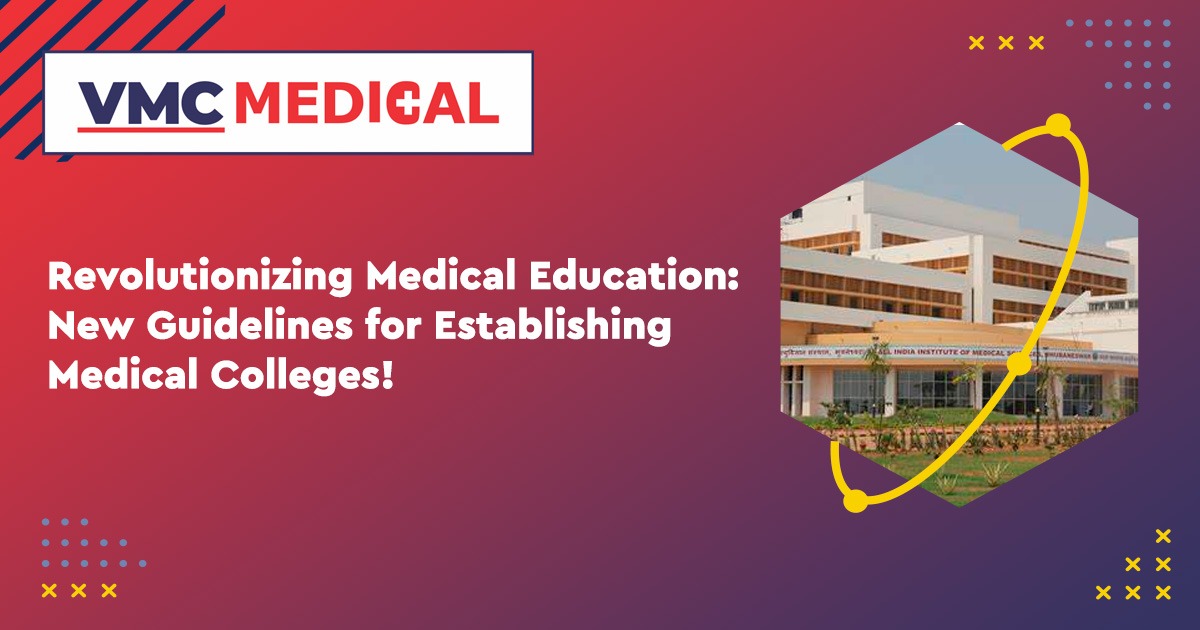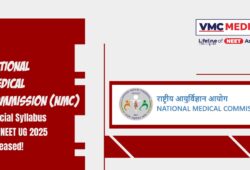Revolutionizing Medical Education: New Guidelines for Establishing Medical Colleges!
 Posted On
Posted On
364 total views, 1 views today
In a significant move to enhance the quality and accessibility of medical education, the National Medical Commission (NMC) has rolled out a set of comprehensive guidelines for expanding current medical schools and opening new ones. These guidelines, effective from the 2024-25 academic session, aim to streamline medical education while ensuring optimal infrastructure and training opportunities for aspiring doctors.
Undergraduate Seat Allocation
Starting from the academic year 2024-25, newly established medical colleges will be permitted a maximum of 150 undergraduate seats. This allocation is based on a proportion of 100 MBBS seats for every 10 lakh population in a given state. The goal is to maintain a balanced distribution of medical seats to cater to the healthcare needs of the population.

Seat Expansion Limitations
Existing medical colleges aiming to increase their seat capacity will face certain limitations. As of the 2024-25 session, colleges seeking additional seats will not be allowed to exceed a total of 150 MBBS students. This measure ensures that seat expansion remains controlled while focusing on maintaining quality education standards.
Application Exception
For colleges that applied for increased seat capacity in the 2023-24 academic year but were unsuccessful in their endeavor, there’s a one-time opportunity in the 2024-25 session to reapply for the same number of seats originally requested (up to a total of 200 or 250 seats).
Future Medical College Permissions
Looking ahead, the NMC has stipulated that new medical colleges will only be granted permission for an annual intake capacity of either 50, 100, or 150 seats after the 2023-24 session. This approach aims to ensure that the growth of medical institutions is aligned with the country’s healthcare demands and maintains a reasonable balance.
Infrastructure and Campus Requirements
Any medical institution seeking permission to open a new medical college must ensure the presence of a medical college, an associated teaching hospital, and student/intern hostels. These elements should be located within a unitary campus or at most two campuses. To facilitate easy access, the travel time between the medical college and the hospital should not exceed 30 minutes. Additionally, the teaching hospital must have a minimum of 220 beds to accommodate clinical training needs.
Skills Laboratory and Training
A key feature of the new guidelines is the emphasis on practical training. Medical institutions must provide a skills laboratory to enable students to practice and refine clinical skills specified in the curriculum. This lab simulates real-world clinical scenarios, aiding students in building competence before clinical exposure. A mandatory six-week skills lab training, including evaluation, precedes students’ clinical training in wards.
Quality Infrastructure and Safety
To ensure the safety and quality of medical education, the guidelines lay down standards for building structures. Medical colleges and hospitals must conform to prevailing building codes and local norms. Fire safety measures and facilities for disabled individuals are mandatory. The guidelines also encourage the provision of furnished accommodation for 75% of students, interns, and resident doctors, with hostel rooms preferably in double occupancy.
Balanced Attendance and Facilities
Attendance is a crucial aspect of medical education. Faculty and resident doctors are required to maintain at least 75% attendance on total working days (excluding vacations). Moreover, provisions for recreational activities, dining, and 24×7 security must be in place at hostels. Students who choose not to avail hostel facilities are free to arrange their own accommodation without additional fees.
Enhancing Medical Education
With these new guidelines, the NMC is taking a significant step towards revamping medical education in the country. By focusing on infrastructure, training, and faculty attendance, these regulations aim to create a more standardized and quality-oriented approach to producing competent healthcare professionals. Aspiring doctors can look forward to a more comprehensive and hands-on learning experience that equips them to serve their communities effectively.




